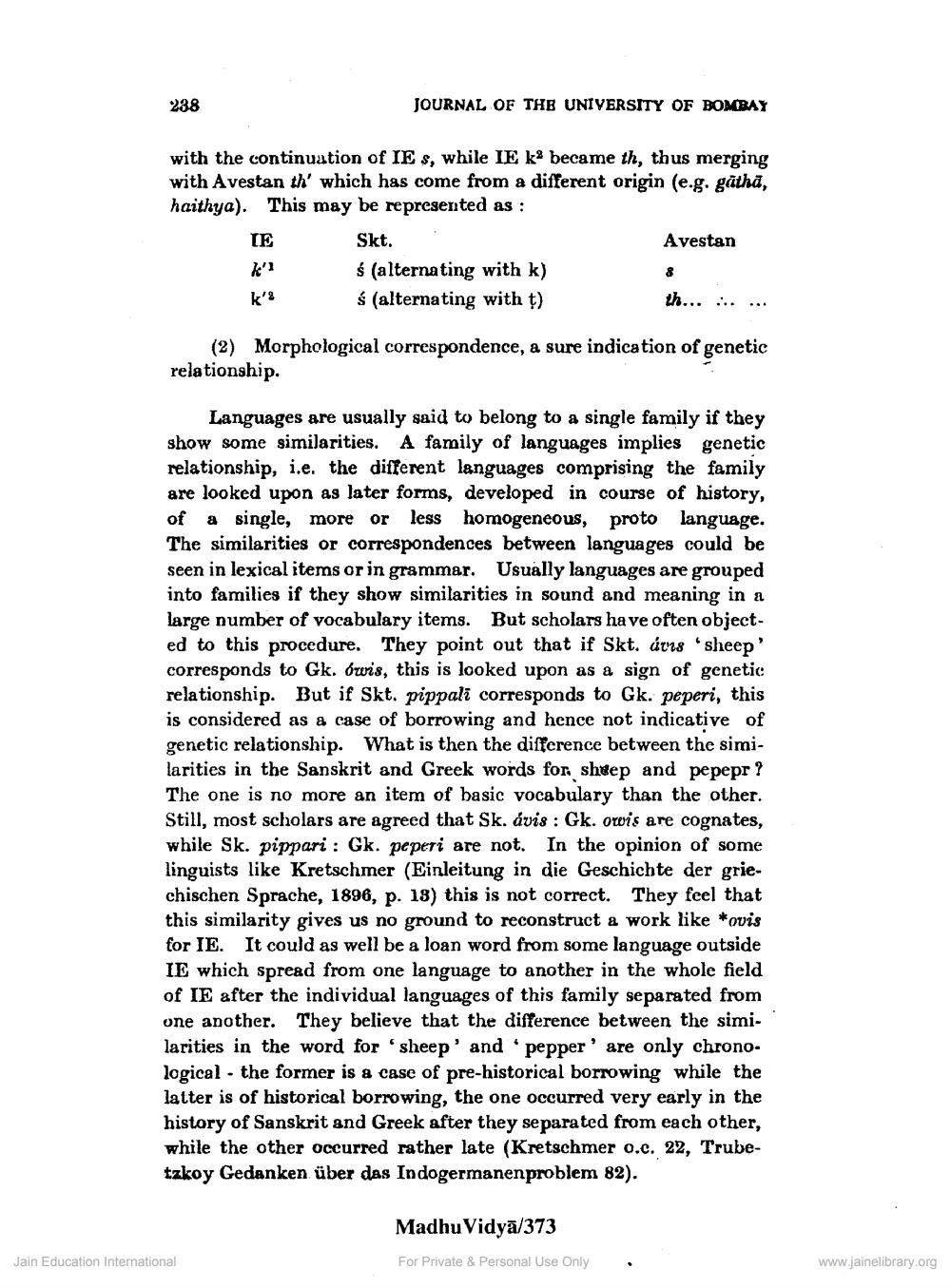________________
238
with the continuation of IE s, while IE k2 became th, thus merging with Avestan th' which has come from a different origin (e.g. githa, haithya). This may be represented as :
JOURNAL OF THE UNIVERSITY OF BOMBAY
IE
k'1
k'2
Jain Education International
Skt.
ś (alternating with k) s (alternating with t)
Avestan
(2) Morphological correspondence, a sure indication of genetic relationship.
8
th...
Languages are usually said to belong to a single family if they show some similarities. A family of languages implies genetic relationship, i.e. the different languages comprising the family are looked upon as later forms, developed in course of history, of a single, more or less homogeneous, proto language. The similarities or correspondences between languages could be seen in lexical items or in grammar. Usually languages are grouped into families if they show similarities in sound and meaning in a large number of vocabulary items. But scholars have often objected to this procedure. They point out that if Skt. dvs 'sheep' corresponds to Gk. ówis, this is looked upon as a sign of genetic relationship. But if Skt. pippali corresponds to Gk. peperi, this is considered as a case of borrowing and hence not indicative of genetic relationship. What is then the difference between the similarities in the Sanskrit and Greek words for sheep and pepepr? The one is no more an item of basic vocabulary than the other. Still, most scholars are agreed that Sk. ávis: Gk. owis are cognates, while Sk. pippari: Gk. peperi are not. In the opinion of some linguists like Kretschmer (Einleitung in die Geschichte der grie. chischen Sprache, 1896, p. 18) this is not correct. They feel that this similarity gives us no ground to reconstruct a work like *ovis for IE. It could as well be a loan word from some language outside IE which spread from one language to another in the whole field of IE after the individual languages of this family separated from one another. They believe that the difference between the similarities in the word for sheep' and pepper' are only chronological the former is a case of pre-historical borrowing while the latter is of historical borrowing, the one occurred very early in the history of Sanskrit and Greek after they separated from each other, while the other occurred rather late (Kretschmer o.c. 22, Trubetakoy Gedanken über das Indogermanenproblem 82).
Madhu Vidya/373
For Private & Personal Use Only
www.jainelibrary.org




